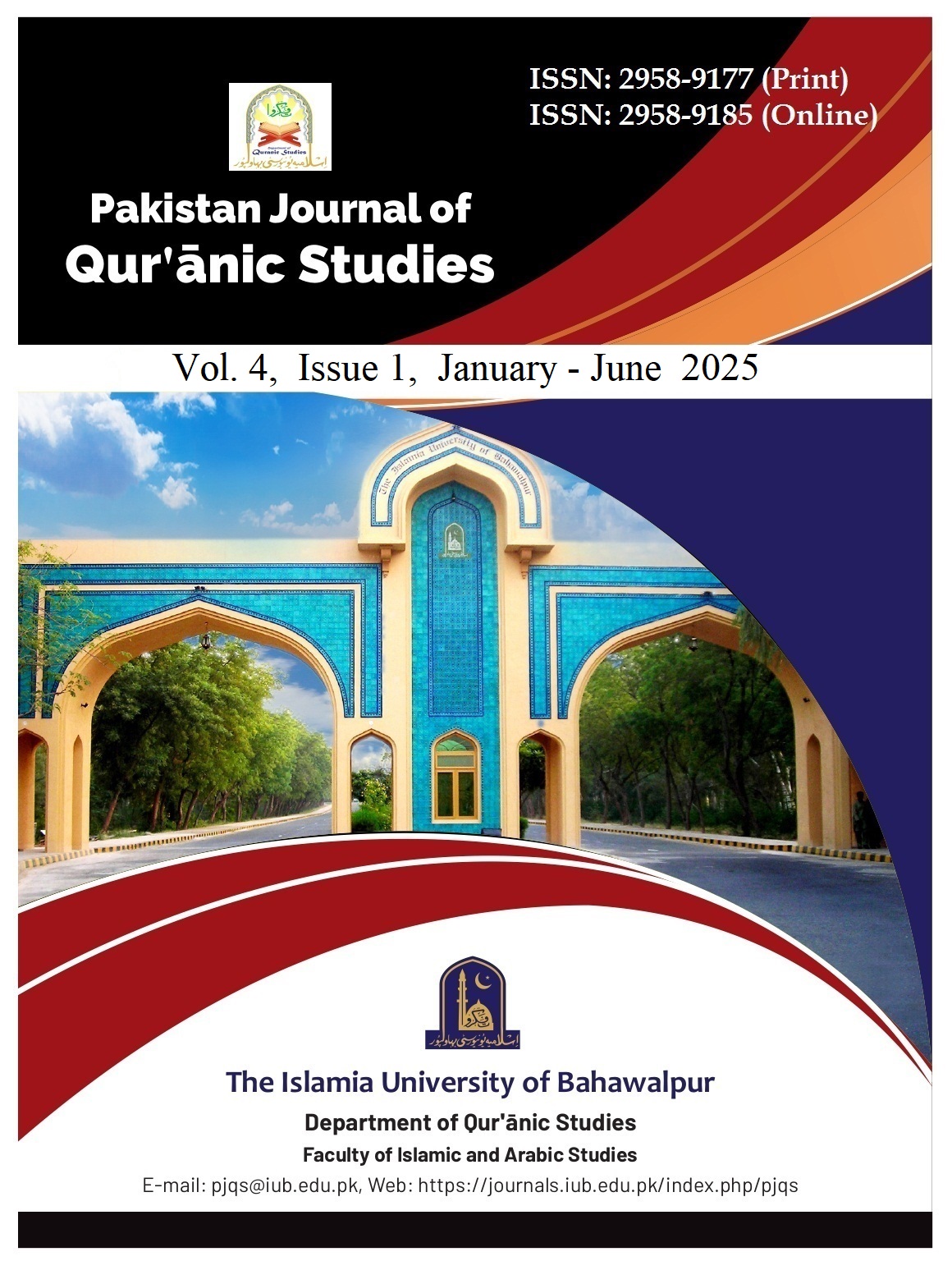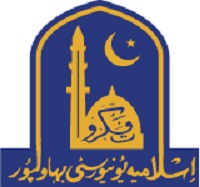قرآنی مخطوطات کی رسم شناسی: قدیم حجازی اور کوفی رسم الخط کاتجزیاتی مطالعہ
Script Typology in Qur’anic Manuscripts: An Analytical Study of Early Hijazi and Kufic Scripts
Abstract
This study investigates the script typology of early Qur’anic manuscripts, focusing on the analytical examination of Hijazi and Kufic scripts within the framework of Islamic palaeography. Drawing upon primary manuscript evidence from leading collections, including examples from Ṣanʿāʾ, Tashkent, Topkapi, and the Blue Qurʾān, the research delineates the morphological, structural, and aesthetic characteristics that distinguish these two formative styles of Qur’anic calligraphy. The Hijazi script, with its distinctive slant, angularity, and absence of diacritical marks, is examined in relation to its historical context in the first century AH, particularly in the Hijaz region. In contrast, the Kufic script, characterized by its rectilinear geometry, proportional balance, and ornamental variations such as Floriated, Knotted, and Square Kufic, is situated within the late 1st–3rd century AH Abbasid calligraphic tradition. The study integrates script typology with palaeographic analysis, comparing scribal practices, orthographic conventions, and decorative features, and evaluating their significance for dating and localizing early Qur’anic codices. This research further engages with scholarly debates—both classical and contemporary—on the evolution and classification of early Arabic scripts, referencing the works of François Déroche, Éléonore Cellard, Sheila Blair, and Alain George. The findings underscore the critical role of script typology in reconstructing the textual, artistic, and cultural history of the Qur’an, and highlight the necessity of integrating traditional manuscript studies with digital imaging and database tools for future scholarship.
Keywords: Qur’anic manuscripts, script typology, Hijazi script, Kufic script, palaeography, codicology, Islamic calligraphy.
References
• Blair, S. S. (2006). Islamic Calligraphy (p. 104). Edinburgh: Edinburgh University Press. ISBN 978-0-7486-1212-3.
• Bloom, J. M. (2007). Arts of the City Victorious: Islamic Art and Architecture in Fatimid North Africa and Egypt. Yale University Press.
• Bronk Ramsey, C. (2009). Bayesian analysis of radiocarbon dates. Radiocarbon, 51(1), 337–360.
• Cellard, É. (2019). Les manuscrits coraniques anciens. In Le Coran des historiens (Vol. 1, p. 681). Paris: Éditions du Cerf.
• Delaney, J. K., Conover, D. M., Ricciardi, P., & Glinsman, L. (2014). Mapping pigments and binders in illuminated manuscripts using hyperspectral imaging. Studies in Conservation, 59(2), 91–101.
• Déroche, F. (1983). Catalogue des manuscrits arabes. Deuxième partie: manuscrits musulmans, Tome I, 1. Les manuscrits du Coran. Aux origines de la calligraphie coranique (pp. 41–45). Paris: Bibliothèque Nationale.
• Déroche, F. (1992). The Abbasid Tradition: Qurʾans of the 8th to the 10th Centuries AD. London: The Nour Foundation.
• Déroche, F. (2006). Islamic Codicology: An Introduction to the Study of Manuscripts in Arabic Script. London: Al Furqān Islamic Heritage Foundation.
• Déroche, F. (2009). La transmission écrite du Coran dans les débuts de l’islam: Le codex Parisino-petropolitanus. Leiden: Brill.
• Déroche, F. (2014). Qur’ans of the Umayyads: A First Overview. Leiden: Brill.
• Déroche, F. (2022). The One and the Many: The Early History of the Qur’an. New Haven: Yale University Press.
• Déroche, F. (n.d.). Le codex Parisino-petropolitanus, p. 113 et suiv.
• Easton, R. L., Noel, W., & Knox, K. T. (2010). Multispectral imaging of the Archimedes Palimpsest. Proceedings of the American Philosophical Society, 154(1), 27–47.
• Fedeli, A. (2017). Transitional Kitaʾt and Transitional Scripts: From Hijazi to Kufic in Early Qurʾān Handwriting. Journal of Islamic Manuscripts, 8(2), 213–239.
• George, A. (2010). The Qur'an in the Early Islamic World: A Study of the Manuscript Evidence. Oxford University Press.
• George, A. (2010). The Rise of Islamic Calligraphy (pp. 55–72). London: Saqi Books.Blair, S. S. (2006). Islamic Calligraphy. Cairo: American University in Cairo Press.
• IIIF Consortium. (2020). IIIF Presentation API 3.0 & Image API 3.0 (Specifications).
• Malzbender, T., Gelb, D., & Wolters, H. (2001). Polynomial texture maps. In Proceedings of SIGGRAPH 2001 (pp. 519–528). New York: ACM.
• Marx, M. (2015). The Qurʾān in Context: Historical and Literary Investigations into the Qurʾānic Milieu. Berlin: de Gruyter.
• Marx, M., & Neuwirth, A. (2010). Corpus Coranicum. Berlin-Brandenburg Academy of Sciences and Humanities.
• Neuwirth, A., Sinai, N., & Marx, M. (Eds.). (2010). The Qurʾān in Context: Historical and Literary Investigations into the Qurʾānic Milieu. Leiden: Brill.
• Reimer, P. J., Austin, W. E. N., Bard, E., Bayliss, A., Blackwell, P. G., Bronk Ramsey, C., ... & Talamo, S. (2020). The IntCal20 Northern Hemisphere radiocarbon age calibration curve (0–55 cal kBP). Radiocarbon, 62(4), 725–757.
• Remondino, F., & Campana, S. (Eds.). (2014). 3D Recording and Modelling in Archaeology and Cultural Heritage: Theory and Best Practices. Oxford: Archaeopress.
• Sadeghi, B., & Bergmann, U. (2010). The Codex of a Companion of the Prophet and the Qurʾān of the Prophet. Arabica, 57(4), 343–436.
• Sadeghi, B., & Goudarzi, M. (2012). Ṣanʿāʾ 1 and the origins of the Qurʾān. Der Islam, 87(1–2), 1–129.
• Safadi, Y. H. (1978). Islamic Calligraphy. London: Thames & Hudson.
• Szeliski, R. (2010). Computer Vision: Algorithms and Applications. London: Springer.
• Taylor, R. E., & Bar-Yosef, O. (2014). Radiocarbon Dating: An Archaeological Perspective (2nd ed.). Walnut Creek: Left Coast Press.
• TEI Consortium. (2022). TEI P5: Guidelines for Electronic Text Encoding and Interchange (Version 4.x).
• University of Michigan Museum of Art. (n.d.). Qur’an manuscript leaf in Abbasid Kufic script (1970/2.109). Retrieved August 10, 2025, from https://umma.umich.edu/objects/quran-manuscript-leaf-in-abbasid-kufic-script-1970-2-109
Downloads
Published
How to Cite
Issue
Section
License
Copyright (c) 2025 Dr Muhammad Samiullah

This work is licensed under a Creative Commons Attribution-NonCommercial 4.0 International License.
You are free to:
• Share: copy and redistribute the material in any medium or format.
• Adapt: remix, transform, and build upon the material.
• Attribution: You must give appropriate credit, provide a link to the license, and indicate if changes were made. You may do so in any reasonable manner, but not in any way that suggests the licensor endorses you or your use.
• NonCommercial: You may not use the material for commercial purposes.
• No additional restrictions: You may not apply legal terms or technological measures, that legally restrict others from doing anything the license permits








